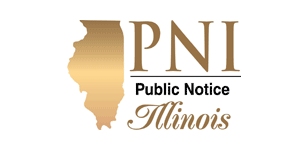When it comes to voting on property tax referendums, the few decide for the many
By Maria Pappas
 If you’ve ever voted, you’ve probably seen one. It’s a referendum, a ballot measure that can affect your property taxes. Simply put, referendums are direct votes where the electorate has the chance to weigh in on a particular issue such as a proposed law, a tax increase, a bond issuance or some other major political or social decision. There are two types of referendums — binding and advisory. The government is legally required to act on binding referendum results. Advisory referendums aren’t legally binding and are often used to measure public opinion before making a governmental decision.
If you’ve ever voted, you’ve probably seen one. It’s a referendum, a ballot measure that can affect your property taxes. Simply put, referendums are direct votes where the electorate has the chance to weigh in on a particular issue such as a proposed law, a tax increase, a bond issuance or some other major political or social decision. There are two types of referendums — binding and advisory. The government is legally required to act on binding referendum results. Advisory referendums aren’t legally binding and are often used to measure public opinion before making a governmental decision.
That makes the binding referendum one of the purest forms of democracy. That’s because it takes the decision-making power away from elected officials and gives it directly to the people. While voters make their choices for government offices in a primary or general election, they also may vote on a bond issue for a new public pool, school library or other project. It’s a lot of power. But it’s power that’s often not used because many people don’t vote in referendums, apparently feeling they’ve done their duty when they choose whom they want for president, governor, mayor or county offices. Our recent study noted that eight different property tax related referendums were placed on ballots during the April 1, election in Cook County. All sought to raise taxes. Five of eight passed, meaning more than $200 million in bond issuances and tax increases will have to be paid for by taxpayers in the coming years.
Despite the costly financial stakes, just 18.4% of eligible voters turned out during the election on April Fool’s Day. In the municipalities that were voting on specific tax increases, turnout was low, ranging from 5.6% to 33.8% according to the latest results. The study also looked at election returns from 2024 and found that average property tax-related turnout was just 45.9%, even though it was a presidential election year. When we dug deeper into the data, we spotted troubling trends:
• Wealthier residents are more likely to vote. In the county’s wealthiest taxing districts, average turnout topped 60% but was only 34% in districts where median household income fell below the county median of $81,797.
• White residents are more likely to vote in referendums. On average, turnout in majority-white districts was more than 20 percentage points higher than in Black, Latino and majority-minority districts.
• Homeowners are more likely to vote. In taxing districts where 80% or more of residents own their homes, average turnout exceeded 55%. Turnout, on average, was just 30% in districts where over 20% of residents rent.
If you’d like to see the level of participation and results in your county, city, town, village, ward, township or precinct you can view the data and use our interactive mapping tool by clicking on the following link or by clicking on referendums in the Pappas Studies box at cookcountytreasurer.com. I would encourage you to do so, because informed citizens are more likely to get off the political sidelines and vote rather than allowing the few to decide for the many. Because what’s clear to me is that when less than half of all voters turn out for property tax referendums that’s not good for our politics or your pocketbook.









